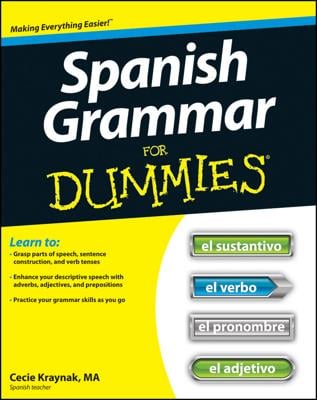The preterit tense in Spanish enables you to put the past behind you. This verb tense describes a completed past action — something that happened yesterday, last night, last week, last year, or at some other definite point in time in the past. The action may have occurred a specific number of times or within an enclosed period of time, but it’s done. Finished. You have closure.
Being able to use the preterit tense after learning how to form it often requires some practice. The key concept to wrap your brain around when it comes to the preterit tense is that the action is completed in the past and shows no signs of continuing. If you’re looking to communicate this sense of finality, then the preterit is the tense for you.
Use the endings shown in the following table to form regular -ar verbs in the preterit tense:
| Yo | -e |
| Tú | -aste |
| él/ella/ello/uno | -o |
| Usted | -o |
| nosotros/nosotras | -amos |
| vosotros/vosotras | -asteis |
| ellos/ellas | -aron |
| ustedes | -aron |
Spelling changes play a part in the preterit tense for some -ar verbs. Keep the following spelling changes in mind:
Change z to c in front of -é: empezar (to begin) becomes yo empecé
Change hard c to qu in front of -é: explicar (to explain) becomes yo expliqué
Change hard g to gu in front of -é: llegar (to arrive) becomes yo llegué
To form regular -er and -ir verbs in the preterit tense, you add the endings shown in the following table to the verb stem:
| Yo | -í |
| Tú | -iste |
| él/ella/ello/uno | -ío |
| Usted | -ío |
| nosotros/nosotras | -imos |
| vosotros/vosotras | -isteis |
| ellos/ellas | -ieron |
| ustedes | -ieron |
Notice that the nosotros forms of -ar and -ir verbs are the same in the preterit tense as they are in the present tense.

